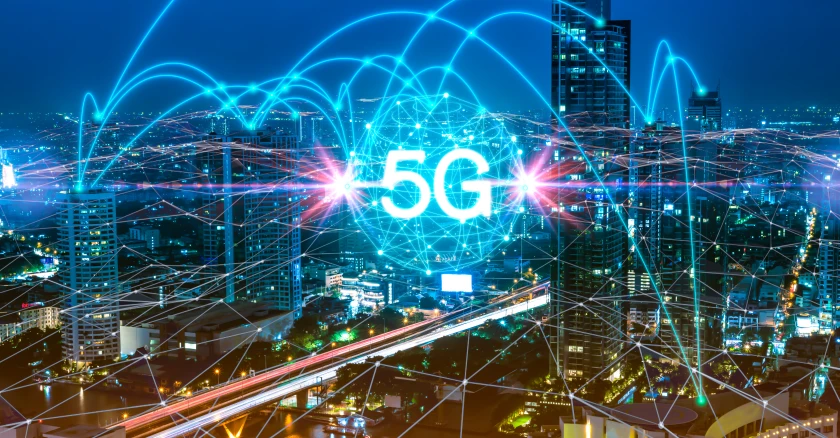The global rollout of 5G technology represents one of the most transformative milestones in the world of telecommunications. By 2025, 5G is not just a buzzword—it is actively reshaping industries, revolutionizing connectivity, and enabling a new era of digital transformation. With its ultra-fast speeds, low latency, and capacity to connect billions of devices simultaneously, 5G is far more than just “faster internet.” It is the backbone of the next industrial and digital revolution.
This article explores what 5G is, how it works, its real-world applications, challenges, and the long-term impact it will have on individuals, businesses, and societies.
What is 5G?
5G, or the fifth generation of wireless technology, is the successor to 4G LTE. Unlike its predecessors, 5G is designed not only to boost speed but also to support a massive number of devices and services simultaneously.
- Speed: Up to 100 times faster than 4G, with peak speeds of 10 Gbps.
- Latency: Ultra-low latency of around 1 millisecond, essential for real-time applications.
- Capacity: Can support millions of devices per square kilometer.
These features make 5G the foundation for smart cities, autonomous vehicles, virtual reality (VR), augmented reality (AR), and the Internet of Things (IoT).
Key Benefits of 5G Connectivity
1. Ultra-Fast Internet Speeds
5G allows streaming 4K and 8K videos without buffering, lightning-fast downloads, and near-instant access to cloud applications.
- Impact: Mobile users can download movies in seconds, businesses can transfer massive datasets effortlessly.
2. Low Latency for Real-Time Interaction
Latency—the delay between sending and receiving data—is critical for applications like self-driving cars, telemedicine, and remote robotics.
- Impact: Surgeons can perform remote operations with robotic tools; gamers experience seamless online play without lag.
3. Massive Device Connectivity
With billions of IoT devices like sensors, wearables, and smart appliances, 5G ensures smooth communication between them.
- Impact: Smart homes, factories, and cities can function with coordinated, efficient systems.
Real-World Applications of 5G
1. Smart Cities
5G enables smart traffic management, energy-efficient grids, connected surveillance systems, and real-time monitoring of urban infrastructure.
- Example: Traffic lights that adapt in real time based on congestion data.
2. Autonomous Vehicles
Self-driving cars depend on split-second communication with other cars, traffic systems, and cloud-based AI models.
- Impact: 5G ensures safer, more reliable autonomous driving.
3. Healthcare and Telemedicine
5G opens up revolutionary possibilities in healthcare, from remote surgery to real-time health monitoring with wearable devices.
- Example: A cardiologist can monitor patient heart rates in real time from thousands of miles away.
4. Entertainment and Gaming
Streaming high-quality VR/AR experiences and cloud gaming without lag is now possible with 5G’s speed and low latency.
- Example: Players can join massive cloud-based multiplayer games with no downloads.
5. Industrial IoT and Smart Manufacturing
Factories can use sensors, robotics, and AI to monitor equipment, prevent failures, and optimize production in real time.
- Impact: Increased efficiency, reduced downtime, and safer workplaces.
Challenges of 5G
1. Infrastructure Costs
Building 5G networks requires new antennas, fiber-optic cables, and massive infrastructure investments.
- Issue: Developing countries may face delays in 5G adoption.
2. Security Concerns
With more connected devices comes greater risk of cyberattacks on 5G networks.
- Issue: Hackers may exploit vulnerabilities in IoT devices connected to 5G.
3. Health and Environmental Concerns
Some groups worry about the potential health effects of 5G radiation and its environmental impact due to increased energy consumption.
- Fact: Scientific consensus currently indicates 5G is safe, but ongoing studies continue.
4. Global Inequality
5G access may widen the digital divide between urban and rural areas, or between wealthy and developing nations.
The Future of 5G and Beyond
By 2030, 5G will be deeply embedded in daily life. However, researchers are already working on 6G, which promises even faster speeds and advanced applications like holographic communication and brain-computer interfaces.
- Prediction: 5G will fuel the growth of smart economies, intelligent automation, and immersive digital experiences.
Conclusion
The rise of 5G is more than a technological upgrade—it’s a revolution in connectivity. From healthcare and transportation to entertainment and industry, 5G is paving the way for innovations once thought impossible. While challenges remain, its potential to transform how humans live, work, and interact with technology is undeniable.
In 2025 and beyond, 5G is not just about speed; it is about unlocking the full potential of a connected, intelligent, and digital-first world.
SEO Keywords: 5G technology 2025, impact of 5G on connectivity, 5G applications, 5G in healthcare, 5G and IoT, benefits of 5G, future of 5G.
